February is American Heart Month, a time dedicated to raising awareness about heart health and inspiring communities to take steps toward healthier lifestyles. Child care professionals and families play a vital role in shaping heart-healthy habits through their everyday interactions with young children. Child Care Resource and Referral (CCR&R) organizations play a key role in supporting child care programs to foster heart-healthy habits that can last a lifetime.
Why heart health matters
Heart health starts early. According to the American Heart Association, a heart-healthy diet from an early age lowers cholesterol and, when maintained through adolescence and beyond, can reduce the risk of heart disease in adulthood. In other words, early childhood is the perfect time to introduce heart-healthy habits that can last a lifetime—and that means child care providers are among those who can help children develop these good habits.
Physical activity and nutrition are the foundation of heart health. Encouraging these practices in child care settings benefits both children and educators. Heart-healthy habits established in early childhood can:
- Support long-term heart health: Establishing habits like regular movement and balanced nutrition reduces the risk of high blood pressure, high cholesterol, and obesity.
- Improve overall health and well-being: Children with healthy hearts have more energy, better sleep, and improved mood and focus.
- Enhance school readiness: A healthy heart supports physical development, increased concentration, and social-emotional skills, all important for success in school.
CCR&Rs can collaborate with child care programs by equipping providers and families with simple strategies to help foster heart healthy habits for young children. Strategies for supporting heart health are included below. This information can be shared with child care programs.
Simple strategies to encourage movement in the classroom
Regular physical activity is key to supporting heart health in young children. Here are some easy-to-implement activities to keep kids active and engaged:
- Obstacle courses: Use classroom furniture, mats, or outdoor equipment to create simple obstacle courses that encourage crawling, hopping, and balancing.
- Active story time: Choose books with action words and invite children to act out movements from the story.
- Follow the leader: Include jumping, clapping, and running in place to make this game a fun, heart-pumping activity.
- Stretch breaks: Teach kids simple yoga poses or stretches to start or end the day.
Encourage educators to build movement into their daily routines with small, frequent bursts of activity. You can find more ideas on incorporating movement into routines.
Healthy snack ideas for children
Providing balanced, nutritious snacks in child care settings encourages children to explore and enjoy healthy foods. Participating in the Child and Adult Care Food Program (CACFP) can help child care programs offer balanced meals and snacks that support growth and development. By incorporating nutritious options into daily routines, educators can help children build lifelong healthy eating habits. Here are easy, heart-healthy snack ideas to try:
- Fruit salad: Combine a mix of fruits such as strawberries, grapes, and melon.
- Veggie cups with hummus: Pre-portion veggies such as carrot sticks, celery, and bell pepper slices with a small cup of hummus.
- Whole-grain crackers with cheese: Pair whole-grain crackers with low-fat cheese slices.
- Apple slices with nut butter: Serve apple slices with almond or peanut butter (check for allergies and offer alternatives as needed).
- Yogurt parfaits: Layer low-fat yogurt, granola, and berries for a fun treat.
Enrolling in CACFP can help child care programs provide these nutritious options affordably. For more heart-healthy, kid-friendly recipes, check out AHA Kid-Friendly Recipe Collection.
Managing stress for heart health
Managing stress is an important part of heart health. Teaching children healthy coping strategies early can support emotional and physical well-being throughout life. Incorporating stress management strategies into daily routines helps foster healthy coping habits early on and benefits child care professionals and children.
Try these stress-reducing activities:
- Mindful breathing: Practice short, guided breathing exercises.
- Yoga or stretching: Introduce fun, age-appropriate yoga poses or videos.
- Dance parties: Play music and encourage the children to dance and release energy.
- Creative activities: Arts and crafts can provide a calming and creative outlet for children.
Take action today!
CCR&Rs help child care programs integrate heart-healthy habits into their daily routines. Fostering active play, nutritious eating, and stress management can help build a strong foundation for lifelong heart health.
CCR&Rs are uniquely positioned to support child care programs and families in building heart-healthy habits. Here are actionable steps CCR&Rs take to promote heart health in their communities:
- Incorporate heart health into technical assistance:
- Incorporate heart-health strategies into coaching and professional development for child care providers. Share resources on active play, healthy meal planning, and strategies for reducing stress.
- Build partnerships with health organizations
- Collaborate with local health agencies and community organizations to amplify heart health initiatives. Partnerships can help expand reach, provide resources, and support high quality child care. You can find more information at Child Care Aware® of America’s “Collaborating for Child Well-Being Toolkit.”
- Promote participation in the CACFP
- Educate providers about the benefits of the CACFP and support provider enrollment. Highlight how the CACFP supports heart-healthy meal planning and can improve access to nutritious foods.
- Leverage social media and newsletters:
- Use communication platforms to highlight heart health throughout American Heart Month. Share tips, resources, activity ideas, and success stories.
Need help? Request more information from Child Care Aware of America by completing a Technical Assistance request.



